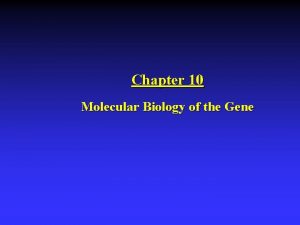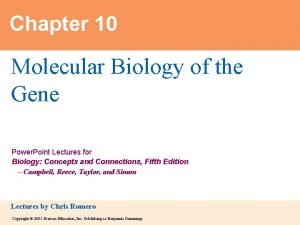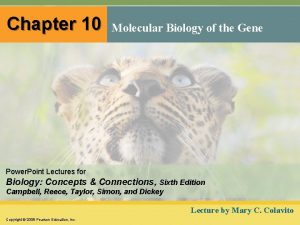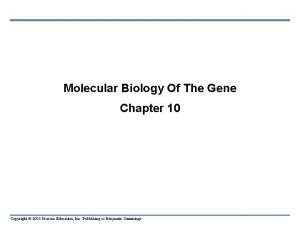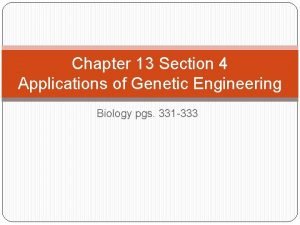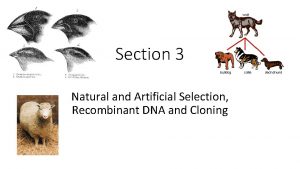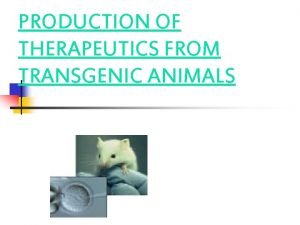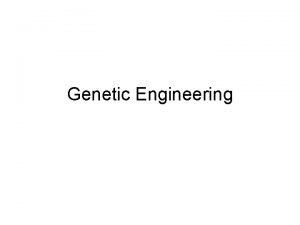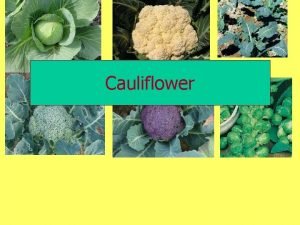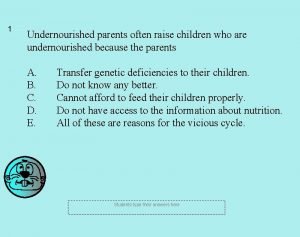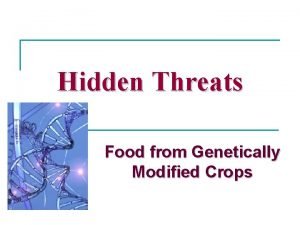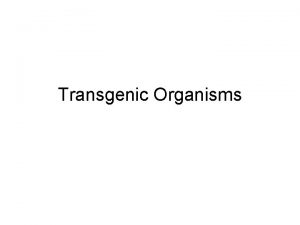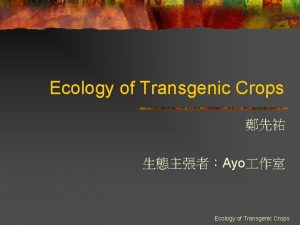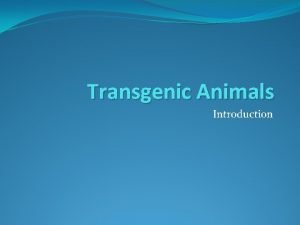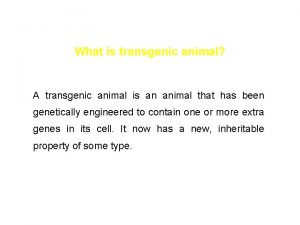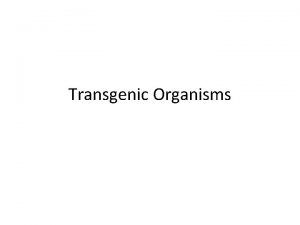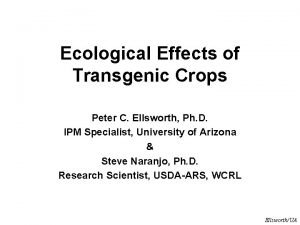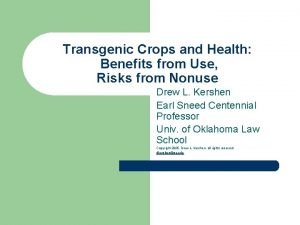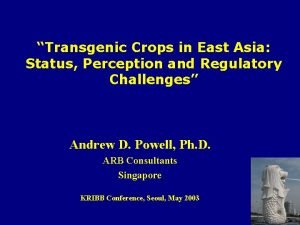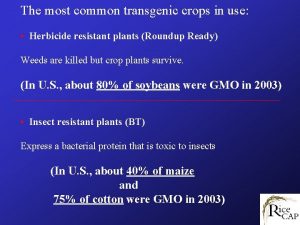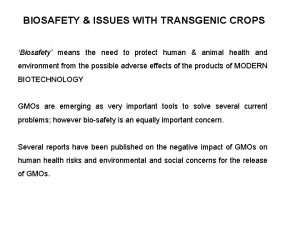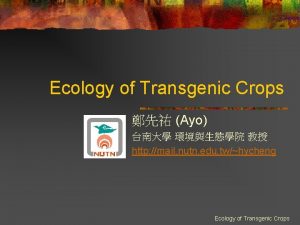Molecular strategies for gene containment in transgenic crops























- Slides: 23

Molecular strategies for gene containment in transgenic crops Nature Biotechnology 20, 581 - 586 (2002) The potential of genetically modified (GM) crops to transfer foreign genes through pollen to related plant species has been cited as an environmental concern. Until more is known concerning the environmental impact of novel genes on indigenous crops and weeds, practical and regulatory considerations will likely require the adoption of gene-containment approaches for future generations of GM crops. Most molecular approaches with potential for controlling gene flow among crops and weeds have thus far focused on maternal inheritance, male sterility, and seed sterility. Several other containment strategies may also prove useful in restricting gene flow, including apomixis (vegetative propagation and asexual seed formation), cleistogamy (self-fertilization without opening of the flower), genome incompatibility, chemical induction/deletion of transgenes, fruit-specific excision of transgenes, and transgenic mitigation (transgenes that compromise fitness in the hybrid). As yet, however, no strategy has proved broadly applicable to all crop species, and a combination of approaches may prove most effective for engineering the next generation of GM crops.

Nature Biotechnology 20, 581 - 586 (2002)

Maternal Inheritance Cytoplasmic organelles (plastids and mitochondria) are inherited maternally in plants and animals. In majority of angiosperms, chloroplasts are inherited maternally. However, there are exceptions: e. g. tobacco could have 0. 1 - 0. 5% pollen-mediated transfer of chloroplast encoded traits. Triazine resistance conferred by mutant chloroplast gene (psb. A) was found to be inherited paternally at the rate of <0. 5%. Paternal inheritance of chloroplast encoded traits has been noted in a few higher plants

Efficacy of plastid transformation technology in gene containment Nature Biotechnology 17, 390 - 392 (1999) Low probability of chloroplast movement from oilseed rape (Brassica napus) into wild Brassica rapa Susan E. Scott & Mike J. Wilkinson Department of Agricultural Botany, School of Plant Sciences, The University of Reading We assess the probability of chloroplast exchange between conventional oilseed rape and wild Brassica rapa to model the future behavior of transplastomic cultivars. Primers specific to cp. DNA were used to demonstrate maternal inheritance of chloroplasts in 47 natural hybrids between cultivated B. napus and wild B. rapa. We conclude that there will be no or negligible pollen-mediated chloroplast dispersal from oilseed rape. Transgene introgression could still occur in mixed populations, however, if B. napus acted as the recurrent female parent. Rate of transfer would then depend on the abundance of mixed populations, their persistence as mixtures, and hybridization frequency within stands. A low incidence of sympatry (0. 6− 0. 7%) between wild B. rapa and cultivated B. napus along the river Thames, UK, in 1997 and 1998, suggests mixed stands will form only rarely. Eighteen feral populations of B. napus also showed a strong tendency toward rapid decline in plant number, seed return, and ultimately, extinction within 3 years. Conversely, hybrid production is significant in mixed stands, and the absence of control practices means that oilseed rape will have slightly greater persistence. We infer that some introgression from transplastomic B. napus into B. rapa is inevitable in mixed populations even though such populations will occur infrequently and will tend to lose B. napus plants relatively quickly. Chloroplast exchange will be extremely rare and scattered

Male sterility Disrupt pollen development by expressing a lethal gene in pollen. Promoter of a tapetum specific gene (TA 29) was used to drive the expression of RNase T 1 gene, which disrupted pollen formation. Barstar Barnase system Barnase (110 amino acids) is a secreted ribonuclease from Bacillus amyloliquefaciens. Barstar (89 amino acids) is a cytoplasmic barnase inhibitor with which the host protects itself. RNase is linked with bar gene (glufosinate tolerant), so glufosinate tolerant plant will be male sterile. GM canola containing barstar/ barnase system composes about 10% of commercially cultivated crops in Canada and is one of the few GMO cleared for agricultural use in Europe.

Induction of male sterility in plants by a chimaeric ribonuclease gene Nature 347, 737 -741 (25 October 1990) Chimaeric ribonuclease genes that are expressed in the anthers of transformed tobacco and oilseed rape plants were constructed. Chimaeric ribonuclease gene expression within the anther selectively destroys the tapetal cell layer that surrounds the pollen sac, prevents pollen formation, and leads to male sterility. These nuclear male sterility genes should facilitate the production of hybrid seed in various crop plants. Isoltaion of a tapetum-specific gene, TA 29, facilitated tapetum specific expression of RNase gene SMC= spore mother cells V= vascular bundle Fi= filament w= anther inner wall t= tapetum Tetrad stage: maturation of microspores depends on tapetal cells

A Nove 1 Cell Ablation Strategy Blocks Tobacco Anther Dehiscence Ablation of the Stomium (St) Region Leads to Anthers That Fail to Dehisce TA 56 gene is stomium specific Lectin gene is active in many vegetative and floral tissues.

A Nove 1 Cell Ablation Strategy Blocks Tobacco Anther Dehiscence Cell Ablation Strategy Using Chimeric Barnase and Barstar Genes with Overlapping Cell Specificities. Blocks represent cross-sections through a hypothetical organ system that has four different cell types. The circular cells in the lower right quadrants are the targets of the ablation experiment. (A) Blue represents transcriptional activity of the promoter (lectin gene) fused with the anti-cytotoxic barstar gene. (B) Red represents transcriptional activity of the promoter (TA 56 gene) fused with the cytotoxic barnase gene. (C) Combined transcriptional activities of the chimeric barnase and barstar genes. Both chimeric genes are active within the dark gray cells in the upper right quadrant. Only the chimeric barnase gene is active in the target cells present in the lower right quadrant. (D) Selective ablation of the target cells. Barnase/barstar complexes are formed within the dark gray cells in the upper right quadrant protecting them from the cytotoxic effects of barnase. The target cells in the lower right quadrant have been ablated selectively due to the cell-specific activity

Seed sterility Genes involved in seed development may be used to deliver toxicity to seeds A. Terminator technology: Not published in scientific literature. Patented by USDA and licensed by Monsanto. Seeds are treated with tetracycline before sale. Following components have been described: 1. Ribosomal inhibitor protein (RIP) gene under the control of LEA promoter. LEA (Late Embryonic Abundance) is a seedspecific gene. 2. A lox. P flanked spacer between LEA promoter and the RIP ORF. 3. Cre expression controlled by a “Tet-on” system. B. Hormone manipulation LEA promoter controls iaa. H gene.

The “Tet-on” system In E. coli, the Tet repressor protein (Tet. R) negatively regulates the genes of the tetracycline (Tc)-resistance operon on the Tn 10 transposon. Tet. R blocks transcription of these genes by binding to the tet operator sequences (tet. O) in the absence of Tc. Tet. R and tet. O provide the basis of regulation and induction for use in mammalian experimental systems. Tet. R tet. O Promoter No transcription Tc Tc captures Tet. R (promoting transcription)

Cleistogamy and Apomixis Cleistogamy: occurrence of self-pollination and fertilization with the flowers remaining unopened. (soybean, rice, wheat) Apomixis: Formation of seeds without sexual pollination. Seeds are vegetative. (Pennisetum and Panicum produce apomictic embryos). Better understanding of these processes and isolation of the genes involved may lead to engineering cleistogamy and apomixis for gene containment in crops plants.

Apomixis

Scheme of Sexual and Apomictic Reproduction Grossniklaus, U. , et al. Plant Cell 2001; 13: 1491 -1498 Copyright © 2001 American Society of Plant Biologists


Chasmogamous (wild-type) cleistogamous japonica cleistogamous Chasmogamous (wild-type) cleistogamous indica background

Genome incompatibility Many cultivated crops have multiple genomes. Only one of these genomes is compatible for interspecific hybridization with weeds. For eaxmple, the D genome of wheat is compatible with the D genome of Aegilops cylindrica (goatgrass). Therefore it is much harder to produce inter-specific hybrid between durum wheat (AABB) and goatgrass. Similarly there is a possibility for gene transfer from the B genome of Brassica juncea to many Brassica weeds, which carry B genome. However, so far most of the genetic engineering is done on B. napus which contains AACC genome.

Theor Appl Genet (1997) 95 : 442 -450 The impact on biosafety of the phosphinothricin-tolerance transgene in inter-specific B. rapa X B. napus hybrids and their successive backcrosses The present study investigated the transfer of a phosphinothricin-tolerance transgene by inter-specific hybridization between B. rapa and two transgenic B. napus lines. The expression of the transgene was monitored in the F 1 hybrids and in subsequent backcross generations. The transgene was transmitted relatively easily into the F 1 hybrids and retained activity. Large differences in the transmission frequency of the transgene were noted between offspring of the two transgenic lines during backcrossing. The most plausible explanation of these results is that the line showing least transmission during backcrossing contains a transgene integrated into a C-genome chromosome. Approximately 10% of offspring retained the tolerant trait in the BC 3 and BC 4 generations.

Temporal and tissue specific control Temporal Use chemically induced promoter to turn on the transgene. Many inducible promoters are available but only one (alcohol dehydrogenase) is commercialized so far. Spray the plants with the chemical to turn on the promoter and then spray with herbicide/ pesticide. This is not useful for those genes which need to be on through out the life cycle of plants. Tissue Specific Remove the transgene from non-target organs of the transgenic plant. This can be done by a two component system: 1). tissue specific promoter driving cre gene; 2). Transgenes flanked by the lox. P sites.

Transgenic mitigation Compromise the fitness of weeds (TM trait) that by introgression have acquired positive traits from crop genes. Strategy is based on the following facts: 1. Tandem constructs are inherited as tightly linked genes. 2. TM traits are neutral or positive for crops but deleterious for weeds. 3. Mildly harmful TM traits will be eliminated from weed population because such plants strongly compete among themselves and have large seed output.

Potential Transgenic Mitigation (TM) Traits Seed dormancy: weed seeds exhibit secondary dormancy. Abolishing sec. seed dormancy is neutral to crops but deleterious to weeds. Arabidopsis Sleepy 1 (Abscisic acid insensitive) mutant completely lacks sec. dormancy Shattering: Anti-shattering genes are useful for crops and deleterious for weeds. Shattering is thought to be a hormone regulated process, thus changing hormone balance in the abscission zone influences shattering propensity. Cytokinin overproduction is believed to delay shattering. SHATTERPROOF gene of Arabidopsis has been isolated that prevents shattering by delaying valve opening in siliques. Dwarfing: This is positive for crops. Dwarf varieties were credited for green revolution. Height reduction is possible by preventing gibberellin synthesis. Recently a mutant GA receptor gene was isolated that does not respond to GA. It is called “green revolution” gene.

Tandem constructs to mitigate transgene persistence: tobacco as a model Molecular Ecology 13: 697 - March 2004 Dwarfism, which typically increases crop yield while decreasing the ability to compete, was used as a mitigator. A construct of a dominant ahas R (acetohydroxy acid synthase) gene conferring herbicide resistance in tandem with the semidominant mitigator dwarfing gai (gibberellic acid-insensitive) gene was transformed into tobacco (Nicotiana tabacum). Lack of survival of transgenic mitigation (TM) plants in competition with wild type (WT). The proportion of live plants was measured after 100 days of growth in experiment I (closed symbols) and after 111 days in experiment II (open symbols). The lines show the average of the two experiments.

In this method, the gene(s) of interest is tagged with a RNA interference cassette, which specifically suppresses the expression of the bentazon detoxification enzyme CYP 81 A 6 and thus renders transgenic rice to be sensitive to bentazon, a herbicide used for rice weed control. We generated transgenic rice plants by this method using a new glyphosate resistant 5 -enolpyruvylshikimate-3 -phosphate synthase (EPSPS) gene from Pesudomonas putida as the gene of interest, and demonstrated that these transgenic rice plants were highly sensitive to bentazon but tolerant to glyphosate, which is exactly the opposite of conventional rice. Field trial of these transgenic rice plants further confirmed that they can be selectively killed at 100% by one spray of bentazon at a regular dose used for conventional rice weed control. Furthermore, we found that the terminable transgenic rice created in this study shows no difference in growth, development and yield compared to its non-transgenic control. Therefore, this method of creating transgenic rice constitutes a novel strategy of transgene containment, which appears simple, reliable and inexpensive for implementation.

 Containment theory criminology
Containment theory criminology Gene by gene test results
Gene by gene test results Protein power point
Protein power point Chapter 10 molecular biology of the gene
Chapter 10 molecular biology of the gene Chapter 10 molecular biology of the gene
Chapter 10 molecular biology of the gene Chapter 10 molecular biology of the gene
Chapter 10 molecular biology of the gene Hershey and chase experiment
Hershey and chase experiment Transgenic bacteria
Transgenic bacteria What is transgenic organism
What is transgenic organism Transgenic bacteria
Transgenic bacteria Transgenic organisms examples
Transgenic organisms examples Transgenic
Transgenic Possible transgenic maize in oaxaca mexico
Possible transgenic maize in oaxaca mexico Zinc oxide + nitric acid → zinc nitrate + water
Zinc oxide + nitric acid → zinc nitrate + water Giant molecular structure vs simple molecular structure
Giant molecular structure vs simple molecular structure Giant molecular structure vs simple molecular structure
Giant molecular structure vs simple molecular structure Genetically modified crops have
Genetically modified crops have Life cycle of perennial plants
Life cycle of perennial plants North central plains map
North central plains map Marketing of horticultural crops
Marketing of horticultural crops Value added products of cauliflower
Value added products of cauliflower High responder crops of the green revolution
High responder crops of the green revolution Genetically modified crops have
Genetically modified crops have Farmer plants different crops in a field each year
Farmer plants different crops in a field each year



